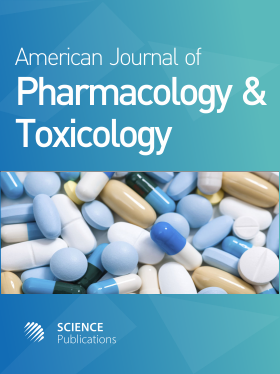Aqueous Stem Bark Extract of Spathodea campanulata (P. Beauv) Modulates Carbon Tetrachloride Induced Hepatic Damage in Rats
- 1 Kwame Nkrumah University of Science and Technology, Ghana
- 2 Komfo Anokye Teaching Hospital, Ghana
Abstract
The objective of the present study was to evaluate the hepatoprotective and curative potential of the aqueous extract of the stem bark of Spathodea Campanulata (SCE) in a carbon tetrachloride-induced model of hepatotoxicity in rats. Rats pre-treated with 625 mg kg-1, 1250, 2500 mg kg-1 or silymarin (50 mg kg-1) p.o for 3 days were intoxicated with CCl4 (1 mL kg-1, 20% in liquid paraffin, p.o). In curative studies, rats received CCl4 (1 mL kg-1, 20% in liquid paraffin, p.o daily) for 5 days before treatment with 100, 300 and 625 mg kg-1 or silymarin 50 mg kg-1 p.o daily for 3 days. In both the prophylactic and curative studies, significant hepatoprotective effects were obtained against liver damage induced by carbon tetrachloride as evident from decreased serum levels of Aspartate Aminotransaminase (AST), Alanine Aminotransferase (ALT), Gamma glutamyl transferase and bilirubin in the SCE treated groups (100, 300, 625 mg kg-1) and the silymarin group compared to the intoxicated controls. These results correlated well with the histopathology of liver for treated and control groups as well as the antioxidant protective capacity. The extent of lipid peroxidation assayed showed that TBA reactive substances increased significantly (six fold) in the carbon tetrachloride treated animals compared to the control. Treatment with the extract however restored TBA reactive substances to near normal at all three doses compared to the control. Additionally, the presence of phenols and the reducing power of the extract confirmed the antioxidant protective effect suggested by the reduction in lipid peroxidation. Administration of the extract (p.o) for seven consecutive days also significantly inhibited cytochrome P450 enzymes. The inhibitory effect on P450 enzymes possibly interfered with CCl4 bioactivation and thus protected the hepatocytes. The present study thus suggests that aqueous stem bark extract of Spathodea campanulata significantly reverses CCl4 hepatic damage in rats.
DOI: https://doi.org/10.3844/ajptsp.2013.39.50

- 5,596 Views
- 4,329 Downloads
- 1 Citations
Download
Keywords
- Spathodea Campanulata
- Carbon Tetrachloride (CCl4)
- Hepatoprotective Effect
